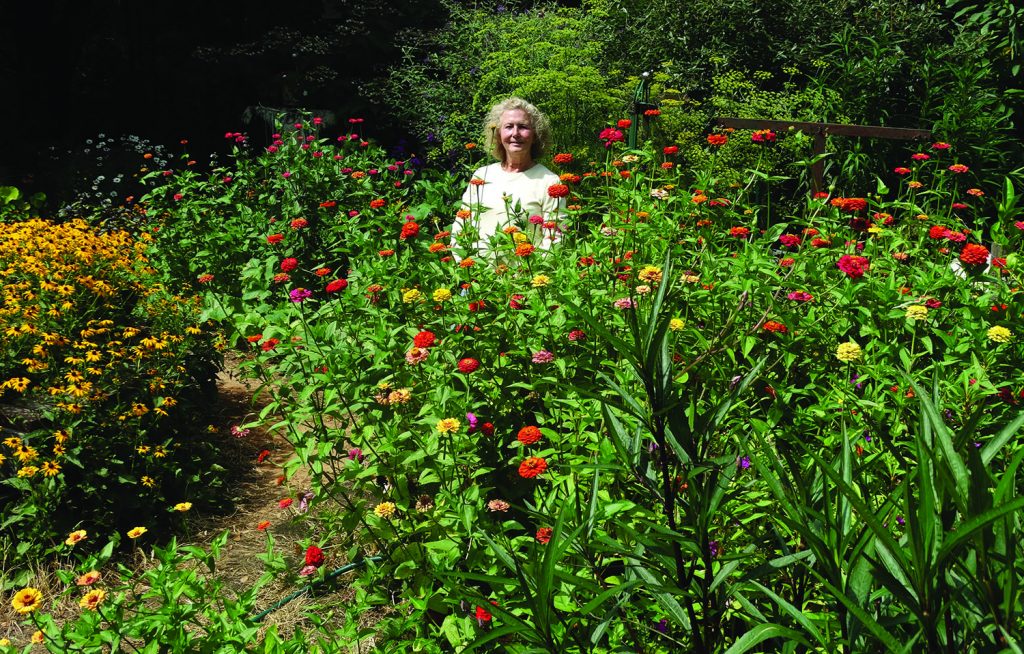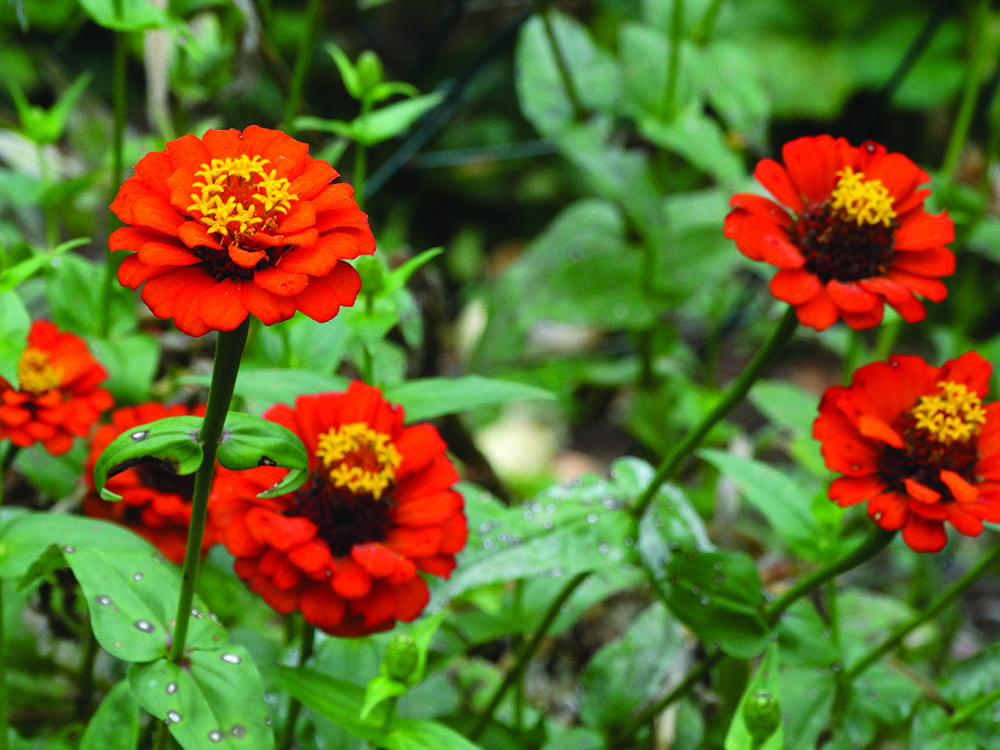Growing simple flowers like zinnias are the best. Give me a fast growing, easy to take care of plant that adds lots of color to my garden and I´ll be happy. Not only are they easy to grow, zinnias are the most cheerful flowers you can plant. It is all those vivid colors that give them their personality and make them so attractive to butterflies. And not only are there the heirloom, traditional zinnias but lots of new hybrids, too. You can sow the seeds directly in the soil or purchase cell packs at most garden centers. Zinnias are a colorful and economical flower that provide us with many bouquets throughout the summer.
It is a true testament to their durability for some of the cultivars of this annual have been grown for 50 or more years and are still available. Zinnia elegans also called Zinnia violacea are more common; and, the smaller, narrowleaf, Zinnia angustifolia are gaining in popularity. Of course, there are many new and beautiful cultivars such as ´Candy Cane´, ´Zowie! Yellow Flame´, and my favorite ´Envy´ a light green color.
Zinnias, known as youth-and-age, common name zinnia or elegant zinnia and scientific name ´Zinnia elegans´ are a member of the huge Aster Family ´Asteraceae´ and are closely related to daisies. They are primarily a native of Mexico but some forms of the wild zinnia have been found as far north as Colorado and as far south as Guatemala and were grown by the Aztecs as far back as the 1500´s. The zinnia carries the name of the first botanist to document the plants around 1750, Dr. Johann Gottfried Zinn. And the zinnia flower folklore has several meanings including thoughts of friends, endurance, daily remembrance, and goodness and lasting affection.

Not all gardeners like older varieties of annuals such as zinnias, petunias, portulacas and a few others. But for those of us that love our bees and butterflies or have a wildlife habitat, zinnias are one of their favorite nectaring flowers, especially for monarchs that are arriving now through October. Plant them near your butterfly weed and you just provided the monarch with easy access to their nectar and host plants. Or plant them near your passion flower ´Passiflora´ providing the gulf fritillary with their favorite nectar and host plant and watch them come!
Zinnias are one of the easiest flowers to grow, as they grow quickly and bloom heavily summer through fall. But a little extra care will yield more and healthier flowers. So, choose a location with good air circulation and full sun…zinnias will be floppy and sickly in shade. While they tolerate a wide range of soil types, they will bloom best in moist, well-drained soil that has lots of compost worked into it. In good soil, there is no need for extra fertilizer. But if you want, a light sprinkling of a low-nitrogen, slow-released fertilizer will keep them blooming all summer. Water early in the morning at the base of the plant that has been covered with a couple inches of organic mulch to help prevent powdery mildew and then watch them grow!
Most of the shorter cultivars will not need staking, but tall, traditional types can be top heavy. So, I use tomato cages and place them around small starts for a fast and easy support. The pictures you see with this article are the tall, traditional zinnias (heirlooms) that came from seeds I dropped in my garden a couple of years ago. A friend had a packet of zinnia seeds and could not get them to grow. So, as an experiment, I simply dropped three of her seeds on the ground to see what would happen and look at them now!
Traditional, heirloom zinnias are annuals that nature re-seeds for many years. You can also harvest these seeds when the flower petals have dropped off and the flower head becomes a seed pod. This harvesting and/or deadheading is one of the best things you can do to keep more flowers blooming. But why wait for the flowers to fade or turn brown? Pick lots of bouquets, cutting just above a set of healthy leaves. In a week or two, you will find two new stems sprouting from that spot and that means more flowers. And more colorful flowers also mean more butterflies!♦


